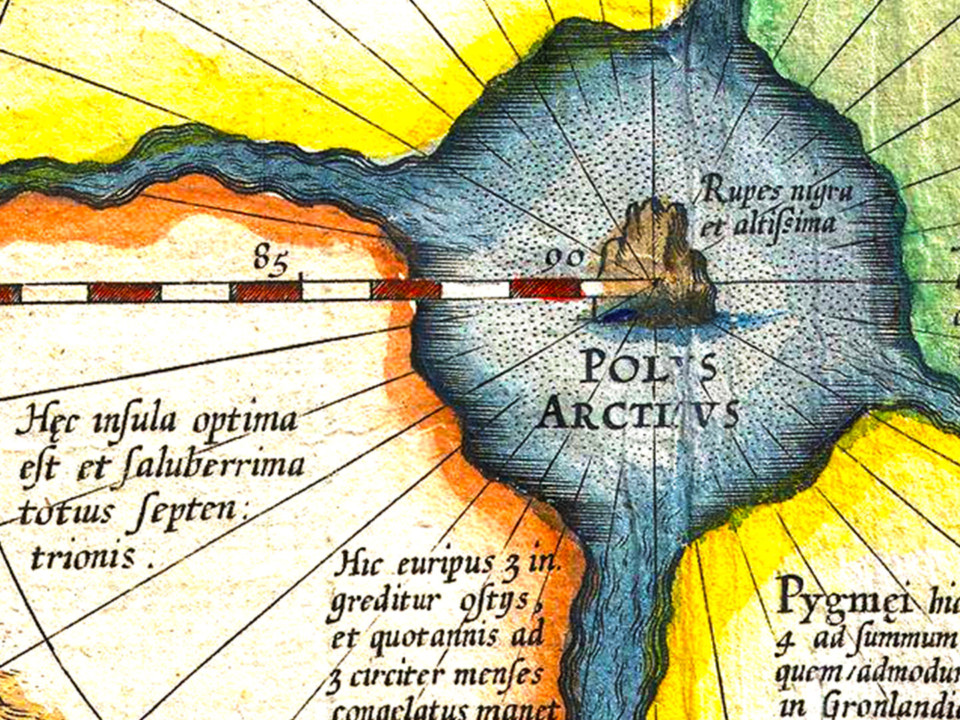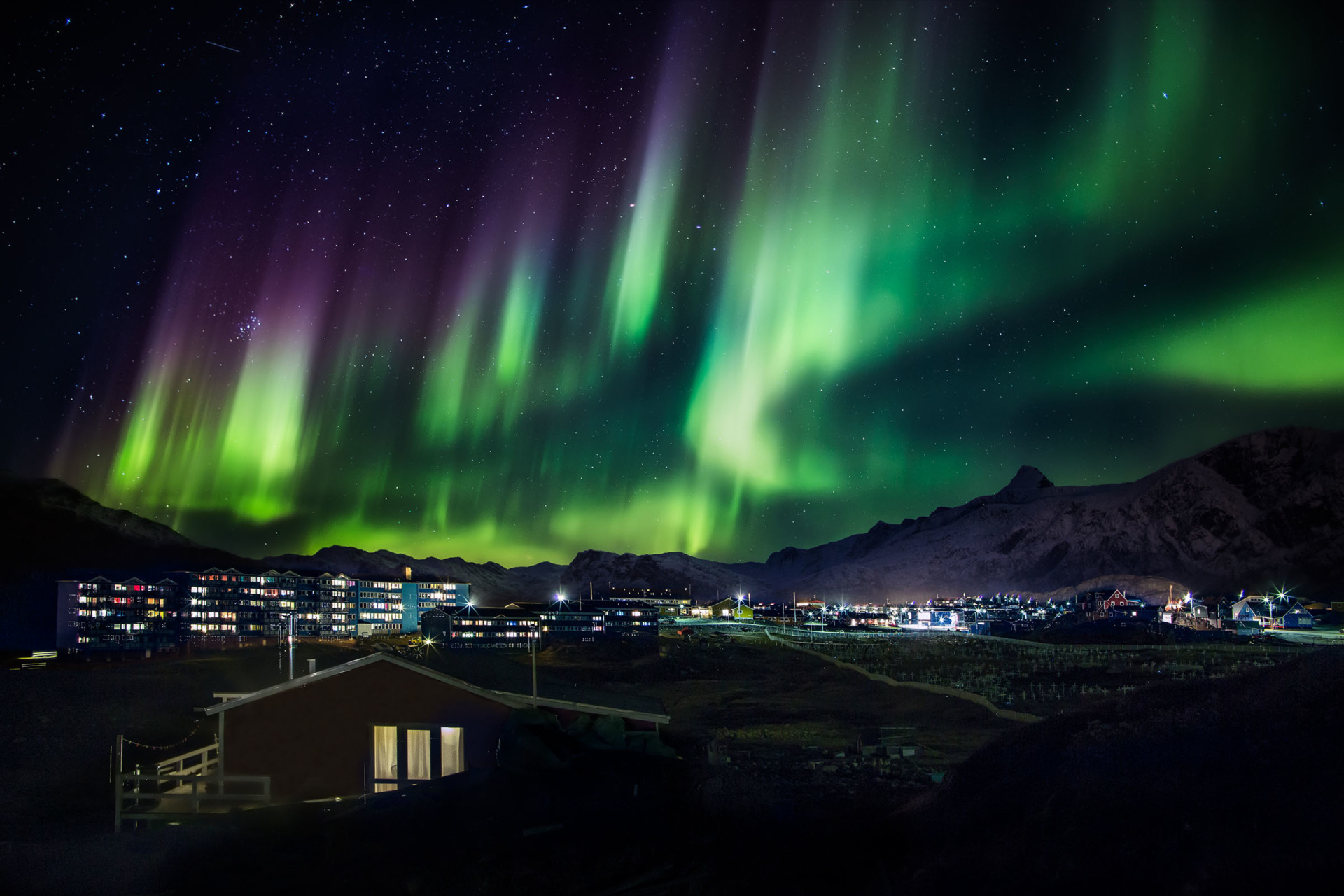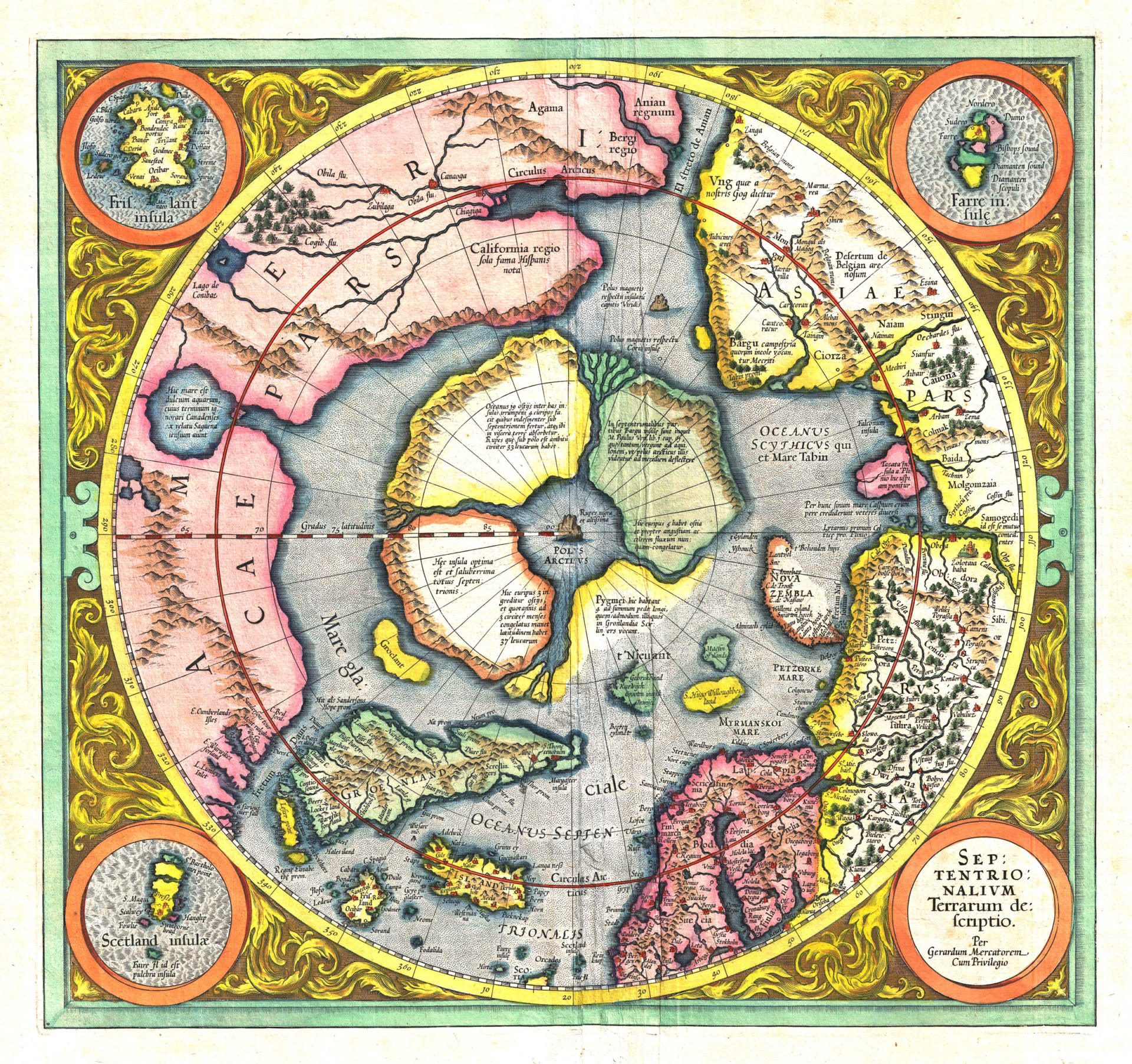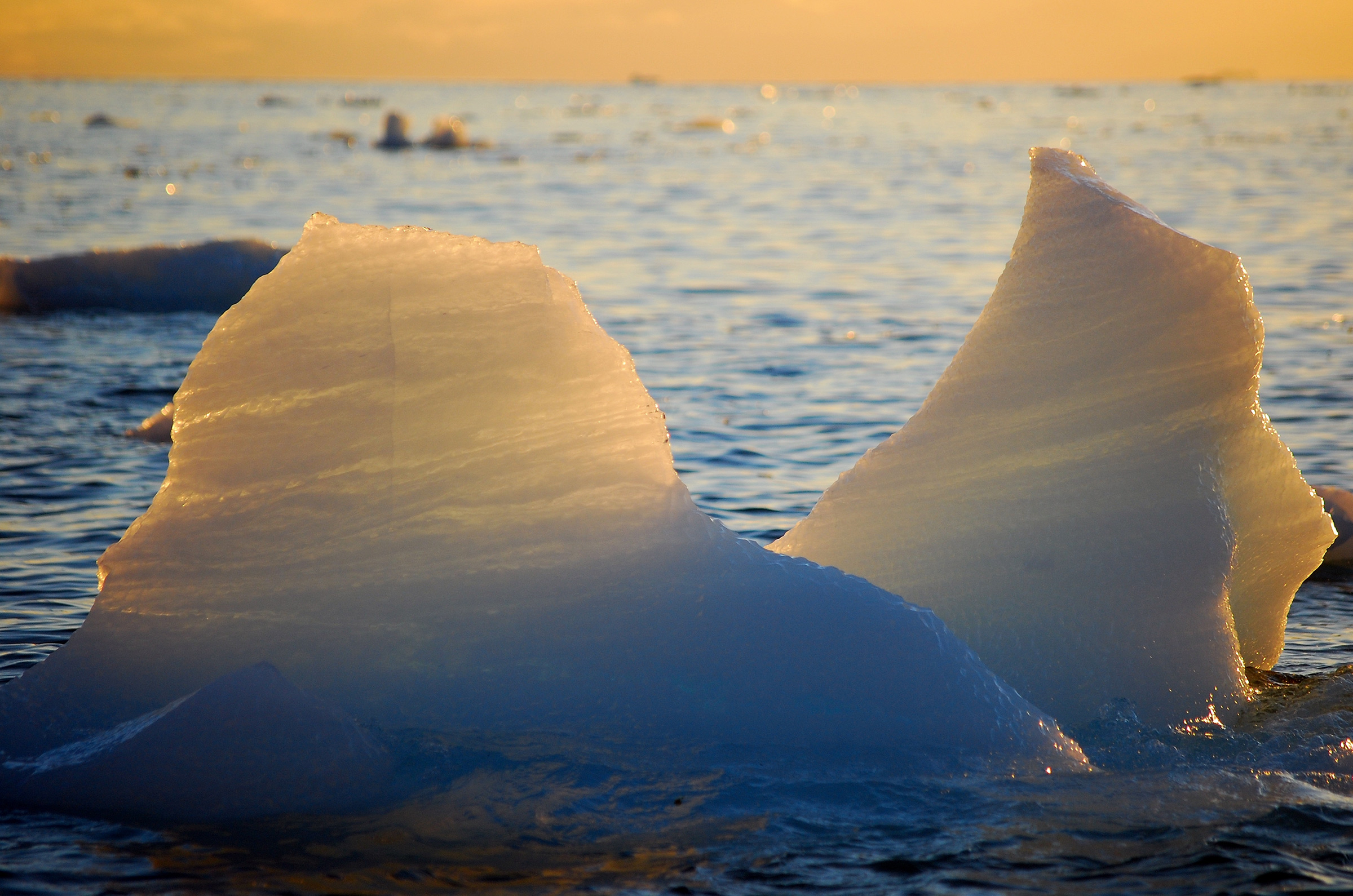According to the 2016 Arctic Report Card from NOAA, the sea ice that has defined the Arctic region for millennia has been declining at a rate of over 13 percent per decade. By the end of the century, if warming in the Arctic region continues, that ice may be a thing of the past.
Governments of Russia, Norway, Canada, and the United States are already redrawing the map: Re-negotiating shipping rights and international borders in anticipation of a future, ice-free Arctic Ocean.
This will not be the first time maps of, or beliefs about the Arctic have changed. The current, first hand and scientific view of the region, has only arisen in the last 100 years – which is relatively recent in regards to human history.
Because of its forbidding climate and terrain, the Arctic has historically been inaccessible and veiled with great mystery. While many maps over the ages do include the North Pole, its depiction has reflected more about the culture and imagination of the times than anything else.
Let’s have a quick look at just a few of history’s beliefs about the Arctic.
Hyperborea
In ancient times, Romans during the fifth century B.C. believed the North Pole was a giant lodestone (magnet) at the top of the world. Perhaps due to the hypnotizing effects of the Northern lights visible in the Northern hemisphere, they believed this lodestone was surrounded by magical, paradise like lands, whose inhabitants were close to the gods.
The Greeks referred to this magical land “beyond the north wind” as Hyperborea. And it was impossible to get to.
“Neither by ship nor on foot would you find the marvelous road to the assembly of the Hyperboreans.”
– Classic Greek poet Pindar
In the 16th century, less than 100 years after Christopher Columbus had made his voyage to the Americas, one of history’s most noted cartographers, Gerardus Mercator, reflected the Roman belief in Hyperborea, featuring both the magnetic mountain and four quadrants of exotic land surrounding it.
Mercator and others also attached folklore of their own time. In his writings, Mercator featured the journeys of King Arthur and his men traveling to the North Pole. A journey from which, according to legend, they never returned.
Around areas in Northwest Russia, such as Lake Seydozero on the Kola peninsula near the Arctic Circle, there is evidence of ancients worshipping the more northerly lands.
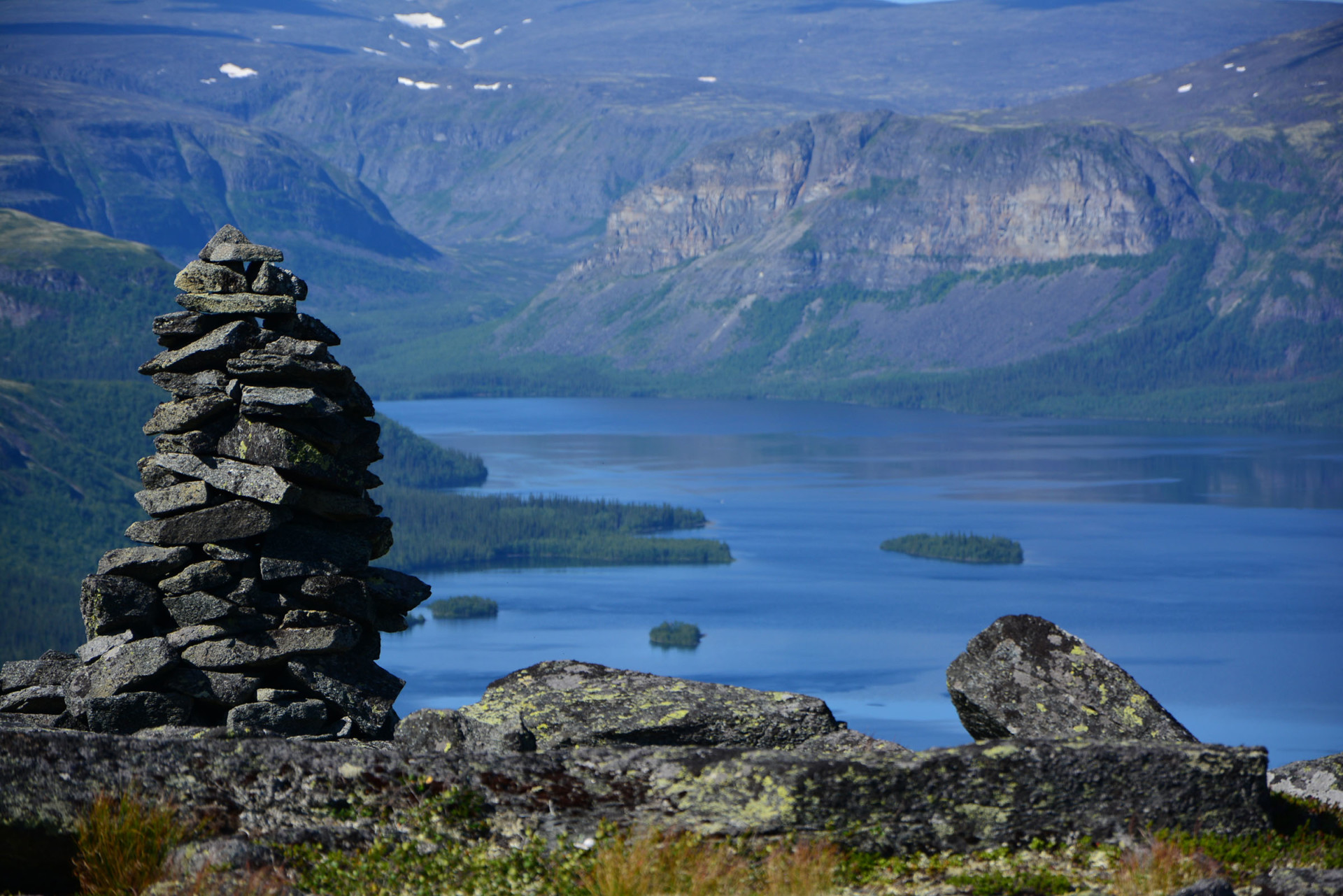
An undated rock monument at Lake Seydozero on the Kola peninsula of Northwest Russia. Lake Seydozero is the site of many ancient artifacts pointing to the legend of Hyperborea. (PHOTO: Russian WLE via Wikimedia)
In 1764, Russian Empress Catherine II sent a secret expedition to find Hyperborea. Unfortunately, the expedition couldn’t make it past the thick ice and had to turn back.
Arctic Fever in the 20th Century

Commander Robert Peary’s exploration party at what they claimed was the North Pole in 1909. Later studies revealed Peary’s party was at least 60 miles short of the geographic pole. (PHOTO: Newfoundland and Labrador Heritage)
In the early 20th century, as western explorers drew closer to reaching the geographic North Pole, some still believed they would find hidden lands.
Famous American explorer Robert Peary claimed to have seen a continent in the far distance while trying to reach the North Pole in 1909. He referred to it as CROCKERLAND – named after George Crocker, a San Francisco banker who had financed Robert Peary’s expeditions.

Map showing the routes of the two expeditions and the theoretical location of “Crockerland”. This map was printed in the New York Tribune on May 11, 1913.
Public imagination and even scientists had a great many ideas of what they might find in the yet to be revealed Arctic continent. Books, magazine articles, and newspapers were filled with theories – and fan fiction of hidden, tropical like lands filled with dinosaurs, or lost Vikings.
PHOTOS: Arctic imagination meets the press in the early 20th century
Click on any image for full-screen slideshow.






As technology improved and exploration increased, trans Arctic flights and submarine missions to the Arctic in the late 1920s and 30s could find no evidence of CROCKERLAND, or any entrances to an inner Earth.
Modern science and technology was slowly dissolving the arctic legends.
The scientific view coming into focus
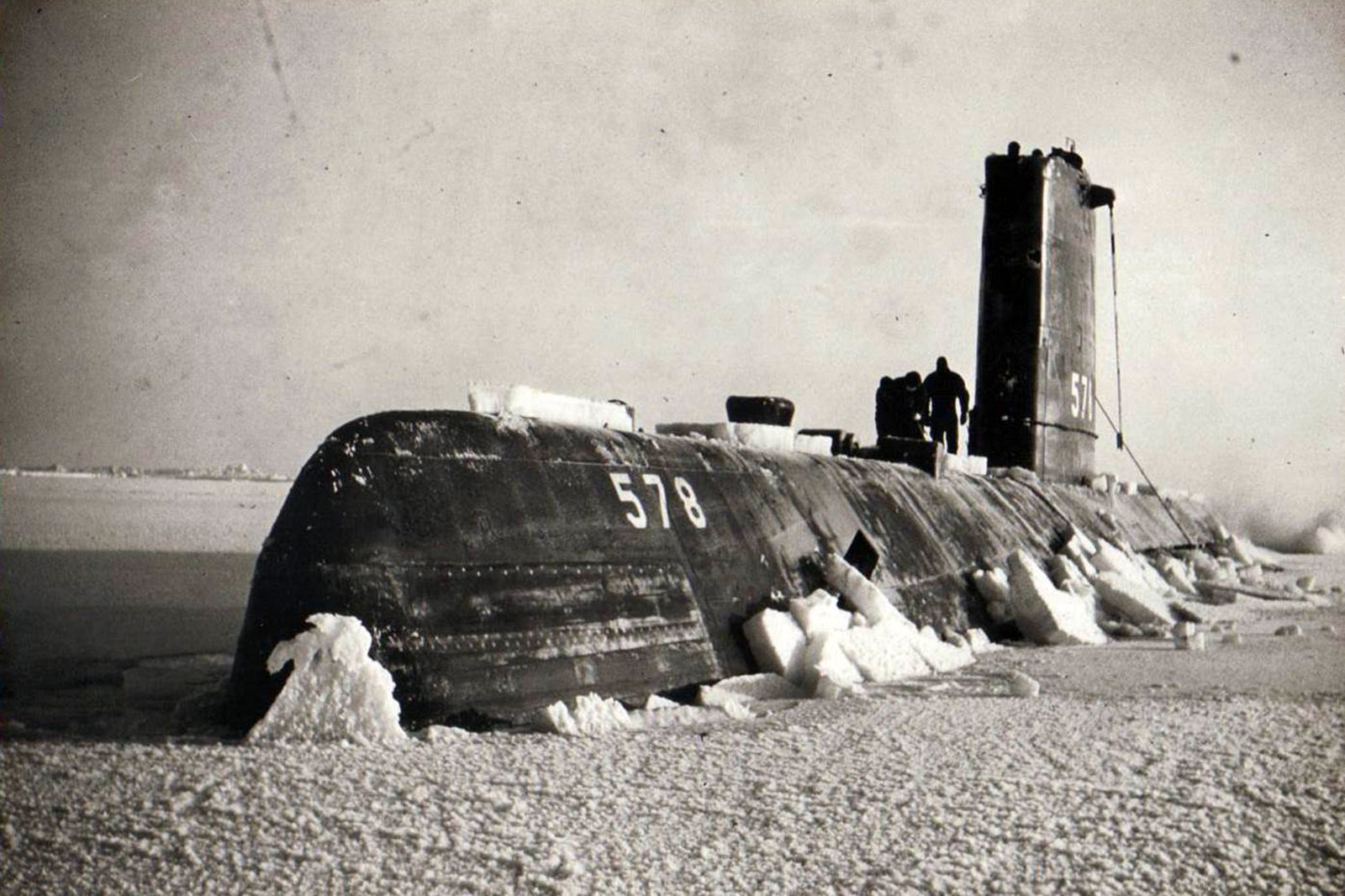
USS Skate (SSN-578) made submarine history on August 11, 1958 when it became the first submarine to surface at the North Pole. (IMAGE: US NAVY)
By 1958, when the USS Skate became the first submarine to surface at the geographic North Pole, there had been enough exploration above – and beneath – the Arctic to firmly discount any hidden continent or landmass. The grand mystery had been solved:
Under the massive ice sheets, floes, and glaciers of the Arctic Circle, there is an ocean basin whose depths reach up to 15,000 feet below the surface.
Charting a future Arctic

An iceberg captured on camera during a 30-day mission in 2012 to map areas of the Arctic aboard the NOAA Ship Fairweather. (PHOTO: NOAA)
As myths about the Arctic have dissipated over the last century, the scientific view has begun to come into focus.
Since the late 1970s, orbiting satellites have regularly captured detailed images of the entire Arctic region as it is.
Along with land and ocean based science stations, satellites have documented a rapid thaw taking place due to the warming effects of climate change. With the Arctic warming twice as fast as the rest of the planet, scientists predict ice-free summers by 2050.
NOAA VIDEO: Arctic ice decline since 1992
As the Arctic continues to thaw, a consensus of climate scientists predict a global rise in sea levels and temperatures, further unpredictability in weather patterns dependent on arctic air and ocean currents, and a breakdown of fragile eco-systems – not only in the Arctic region, but worldwide.
If the scientific view on global warming is correct, the features that had once made the Arctic Circle mysterious and forbidding – the stuff of legend – may dissolve into history as surely – though, perhaps not as gradually – as the myths they once inspired.
MORE:
 CGTN America
CGTN America
